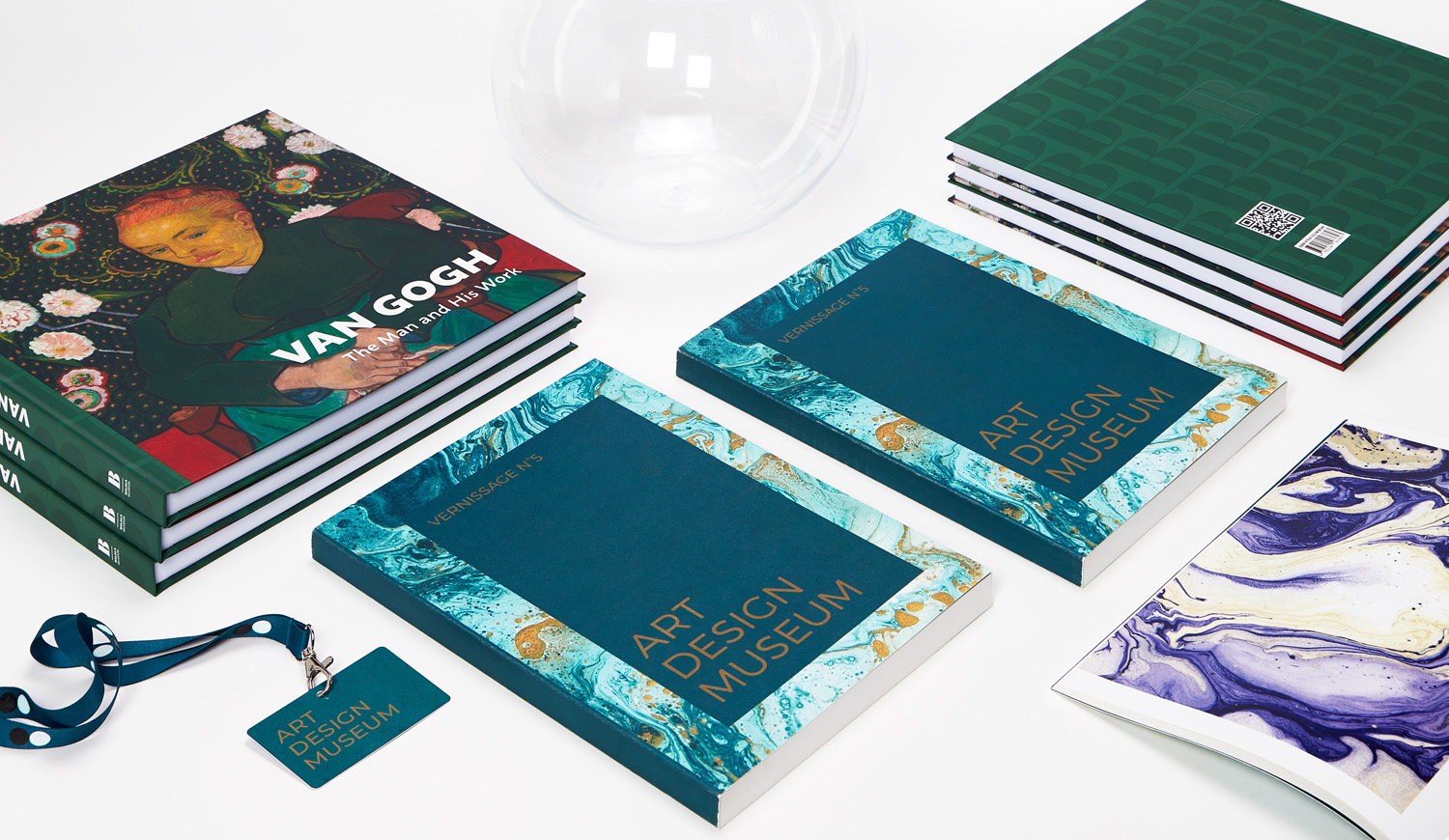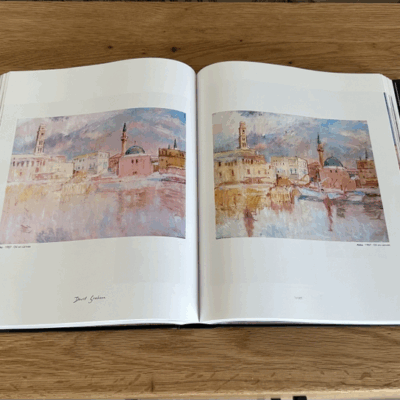Creative Features That Add Value to Your art book
Wiki Article
Discover the Important Overview to Art Book Printing for Aspiring Artists and Publishers
As a hopeful artist or publisher, comprehending the subtleties of art book printing is important to bringing your vision to life. What are the vital components you should focus on to produce a stunning art book that absolutely represents your job?Understanding Various Types of Art Books
When you plunge into the globe of art publications, you'll swiftly uncover that they come in different types, each customized to various imaginative expressions and target markets. Coffee table publications often showcase spectacular visuals, best for laid-back surfing, while essays dive deep right into a specific musician's job, supplying context and understandings. If you want details art activities, event magazines supply thorough documents of programs, including essays and reviews.For instructional objectives, art handbooks and technique publications direct you via different mediums and designs, making them important for aiming musicians. Each format offers its purpose, and recognizing their distinctions can boost your art book journey.
Picking the Right Paper and Materials
Picking the best paper and products can substantially impact the total high quality and feeling of your art book. Begin by taking into consideration the kind of art work you have. For vivid colors and intricate details, decide for a glossy surface or a heavyweight matte paper that boosts visual deepness. If your job features softer tones or structures, an all-natural or uncoated paper can offer a cozy, welcoming touch.Consider the weight of the paper, also. Thicker choices commonly provide an even more professional appearance, while lighter documents can lower printing costs. Don't fail to remember concerning the binding materials; a sturdy cover can safeguard your web pages and contribute to guide's visual.
Lastly, take into consideration sustainability. Eco-friendly options are acquiring popularity and can reflect your values as a musician. By carefully selecting your paper and products, you'll assure that your art book not just looks wonderful yet additionally really feels unique in the hands of your visitors.

Picking the Ideal Printing Methods
When it comes to publishing your art book, selecting between countered and digital printing can greatly affect your final item. You'll likewise intend to consider exactly how paper quality impacts the overall look of your art work. Let's explore these vital printing methods to find the finest fit for your task.Offset vs. Digital Printing
While both balanced out and electronic printing have their advantages, selecting the right method for your art book can substantially impact the last item. Countered printing offers top notch photos and vivid colors, making it ideal for larger print runs. Eventually, your option must straighten with your imaginative vision and distribution strategy, guaranteeing that your art book shows the high quality you want.Paper Top Quality Factors To Consider
Choosing the appropriate paper quality can considerably boost the visual appeal and tactile experience of your art book. For prints, a glossy coating can make pictures pop, while a matte finish provides a softer, extra subtle look.Following, believe about the sustainability of your selection. Green choices are becoming significantly prominent and can appeal to environmentally-conscious viewers. Request examples to see how various documents work with your art work, guaranteeing the last product shows your vision perfectly.
Making Sure Shade Accuracy in Your Prints
To attain spectacular prints, you require to concentrate on color precision from the beginning. You'll intend to use color calibration strategies to confirm your screen and printer remain in sync. Additionally, proofing your work prior to the last print run can help capture any kind of inconsistencies, assuring your art looks simply as you visualized.Shade Calibration Techniques
Ensuring shade accuracy in your prints begins with efficient shade calibration techniques that assist preserve consistency in between your electronic photos and last published items. Adjust your monitor using equipment calibration devices to attain the best color representation. This validates that what you see on-screen suits what obtains published. Next, choose a color account matched for your printing procedure, like CMYK for print materials. Consistently examine your printer's setups and maintain it to prevent shade changes. It's likewise important to use top notch paper that complements your inks, as different surfaces can significantly impact color outcome. By constantly using these strategies, you'll boost the total top quality of your art prints and far better share your imaginative vision.Proofing for Precision
While you could believe your digital images await print, proofing is essential for achieving shade you can try here precision. Before devoting to a complete print run, always request an evidence from your printer. This allows you to see just how shades translate from display to paper. Contrast the proof with your adjusted screen to spot any kind of disparities. Pay interest to saturation, brightness, and tone, as these aspects can considerably affect your last product.If modifications are required, connect plainly with your printer regarding your preferred outcomes. Do not be reluctant to request multiple proofs if needed; it's worth the financial investment to obtain it right. Eventually, comprehensive proofing warranties that your artwork is stood for as you imagined it, keeping your imaginative stability throughout the printing procedure.

Creating Layouts That Enhance Your Artwork
When you design formats for your art book, it's necessary to ponder just how each element interacts with your artwork. Purpose for a balance in between visuals and message, making sure neither overshadows the other. Usage white area purposefully; it provides your artwork space to breathe and draws interest to its details.Consider the flow of find out here now your book. Arrange images in such a way that guides the visitor's eye, producing a narrative or thematic progression. art book. Differ the dimensions and alignments of your art work to keep the format dynamic and interesting
Select fonts that complement your art work without sidetracking from it. Maintain text concise and relevant, giving context or understanding that boosts the viewer's experience.
Ultimately, test different layouts. Print examples to see exactly how the styles translate theoretically, and readjust as needed. By thoughtfully making your layouts, you'll create an aesthetically appealing art book that resonates with your target market.
Binding Choices for a Professional Complete
Choosing the right binding alternative can considerably impact the total discussion of your art book. You'll intend to take into consideration both appearances and toughness when making your option. Popular options consist of perfect binding, which offers a sleek appearance and is ideal for thicker publications; saddle stitching, perfect for smaller booklets; and spiral binding, which permits pages to lay level for easy watching.If you're aiming for a costs feel, case binding is a superb choice, giving a durable cover and a specialist look (art book). Do not fail to remember about the cover material; alternatives like cloth, natural leather, or a shiny surface can raise your book's appeal
Whatever choice you pick, make sure it matches your art work and enhances the visitor's experience. Take your time to evaluate the benefits and drawbacks of each technique, so your end product reflects the high quality of your imaginative vision.
Preparing Your Data for Publish Preparedness
To guarantee your art book is print-ready, you'll need to pay close focus to submit prep work. Start by setting your paper dimension to match your wanted print dimensions. Use high-resolution pictures-- 300 DPI is the criterion-- to determine sharp, lively visuals. Transform your documents to CMYK setting, as this color space is ideal for printing. Do not forget to include bleed locations, normally an extra 0.125 inches around your pages, to stop any kind of white sides after cutting.Additionally, install your fonts or transform message to outlines to avoid any type of font style problems. Conserve your operate in a PDF style, as this is the most accepted file type for printers. Verify your apply for any kind of typos or format mistakes, as modifications can be expensive after the truth. Take into consideration developing an evidence to assess prior to the last print run. Complying with these steps will aid you attain a refined, expert art book.
Regularly Asked Concerns
What Is the Typical Cost of Publishing an Art Book?
The standard price of printing an art book differs, yet you can expect to pay anywhere from $5 to $20 per copy, relying on elements like size, paper top quality, and printing volume.Just How Can I Discover a Reliable Printing Company?
To locate a trusted printing business, start by looking into online testimonials and asking fellow musicians for suggestions. Contrast quotes, check profiles, and communicate your demands clearly to assure they understand your vision and top quality expectations.
What Is the Regular Turnaround Time for Printing?
The normal turnaround time for printing varies yet typically varies from one to four weeks. Aspects like project complexity and quantity can affect this. Constantly validate with your selected printer for details timelines my blog and expectations.Can I Print My Art Book in Limited Quantities?
Yes, you can most definitely print your art book in minimal quantities. Lots of printing firms provide short-run choices, enabling you to create just the number you need, making it less complicated to manage costs and supply.What Legal Factors To Consider Should I Know for My Art Book?
You need to take into consideration copyright, licensing arrangements, and model releases when producing your art book. Make certain you can make use of all photos and text, securing yourself from prospective lawful concerns down the roadway.Report this wiki page